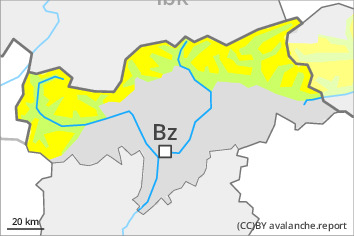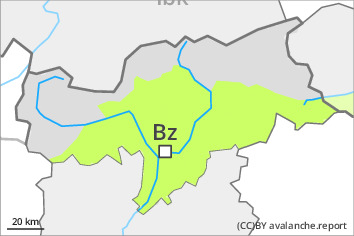
Danger level
 | 2600m |
|  |
|  |

The conditions are favourable over a wide area.
As a consequence of a sometimes strong wind from northwesterly directions, sometimes avalanche prone wind slabs formed. They are to be found in particular on northwest to north to northeast facing aspects above approximately 2600 m. Caution is to be exercised in particular on very steep slopes adjacent to ridgelines. Avalanches can reach medium size in isolated cases.
Only isolated gliding avalanches are possible, in particular on steep east, south and west facing slopes below approximately 2600 m. Areas with glide cracks are to be avoided.
Snowpack
dp.6: cold, loose snow and wind
High altitudes and the high Alpine regions:
The somewhat older wind slabs are lying on soft layers at elevated altitudes. They are in individual cases still prone to triggering.
Towards its base, the snowpack consists of faceted crystals. The snowpack will be subject to considerable local variations above the tree line.
Intermediate and high altitudes: Early and late morning: The snowpack is wet and its surface has a melt-freeze crust that is strong in many cases, in particular on sunny slopes. During the day: The high temperatures will give rise to slight moistening of the snowpack, in particular on sunny slopes.
Tendency
The backcountry touring conditions are spring-like.


